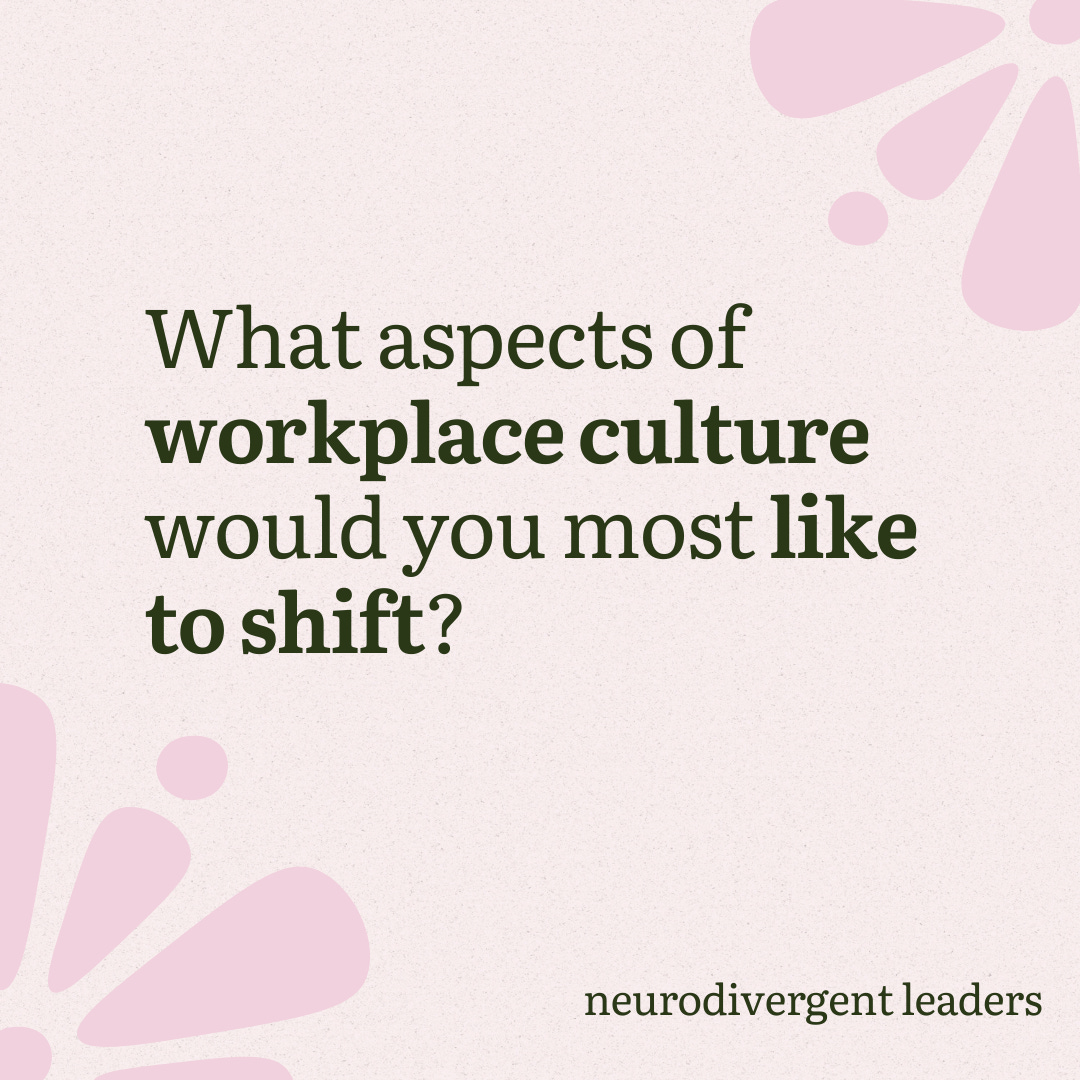The gist of this post is:
If it feels overwhelming to make large changes to workplace processes and cultures, it’s possible to experiment with little shifts.
In this series, we’ll look at little shifts in different areas, beginning with meetings.
It’s possible to make meetings more accessible for neurodivergent people and others by:
establishing clear expectations
creating safety for participating in different ways
being open to different modes of communication.
Why focus on little shifts?
I strongly believe that a culture of experimentation and openness to improving things are really important for accommodating and appreciating neurodiversity at work. After all, when we talk about improving conditions for neurodivergent folks, we’re really talking about making changes to workplace processes, cultures, and environments.
When we’re thinking about changing how we work, it can feel more achievable to take small steps. Plus, these small ripples can build upon each other, creating larger waves. Margaret Hefferman argued in Beyond Measure: The Big Impact of Small Changes that small actions can have large impacts on organisational cultures over time. These small changes can be relatively simple to implement: for example, allowing more alone time for creative thinking.
In this upcoming series, we’ll take a look at different kinds of little shifts that lend themselves well to a bit of experimentation. Let’s begin with meetings - whether you love them or can’t stand them, they’re a fact of life for many workers, which makes them a good candidate for little shifts.
Meetings as an opportunity for changing things up
There’s no one “right” way to hold a meeting - but being open to trying different things can pave the way for improvements. Because neurodivergent folks experience differences in processing and communicating information, the shifts I’m outlining here are mainly about increasing clarity and opportunities to communicate in different ways.
Do you have a regular 1:1 or team meeting which feels like a safe space for trying something new?
Let’s unpack these points.
Establish expectations
Use good meeting hygiene! Establish clear goals, let people know about them in advance, and revisit them at the end of the meeting.
Are the expectations for your meeting clearly set out, or are you relying on assumptions or unwritten rules? Clear communication and expectations are especially helpful for autistic folks (see this helpful infographic by Dr Kirsten Neff). But setting clear agendas and expectations in advance of the meeting isn’t just helpful for neurodivergent people - it will also make things easier for younger or newer staff, for example.
Clear expectations can also help meetings feel safer, as they can help establish safety around certain behaviours, like asking questions.
Make it safe
Allow for different ways of participating, like contributing (or not), questioning, sharing, disagreeing, clarifying, suggesting...
Lynne Cazaly has developed a model for improving meetings, which I love: “How ‘safe’ was that meeting or workshop you were just in?” Though it’s not specifically aimed at neurodivergent folks, I think it’s widely applicable. If we can be curious about the situations and settings that make people feel safe, we can start recognising and accommodating different ways of working and thinking.
Here’s Lynne Cazaly’s model of outcomes and engagement in meetings:
When I first read this article, I immediately thought about the “borture” that people can experience in the "yawn fest" quadrant, which a workmate once described to me as "inwardly screaming". It’s safe to say that nobody is doing their best work when struggling to get through a yawn-fest.
Lynne also recommends reflecting and seeking feedback on meeting safety, which is an excellent way to improve.
Change it up
Allow for different forms of communication. For example, make space for writing or drawing in verbally-dominated discussions.
It’s easy to reach for the communication method that we’re most accustomed to, but it may be relatively straightforward to introduce other options.
A while ago, I attended a Zoom meeting where the organisers deliberately and clearly set the expectation that presentations could either be spoken or written, depending on the preferences of the presenter. Several people opted for writing rather than speaking - one person said that they were more comfortable with written communication, but another person used writing because they were experiencing connection issues. The effect of this was to make the meeting more inclusive and allow wider participation.
In a similar way, it’s possible to switch some traditionally written forms of communication to other methods, like using voice notes instead of emails or text messages. For example, I have a friend who works as a virtual assistant, and voice notes are their main method of communication with clients. Sometimes, talking into your phone can be easier than typing out a message. And, because it’s not a live phone conversation, people can choose to listen to the voice notes when it’s convenient for them.
A third example: are long written documents needed, or could the key points be condensed down or shown in diagrammatic form?
In the next few weeks, we’ll take a look at little shifts in other areas. (Let’s see if I can make it through the series without writing “little shits” instead of little shifts”!)
What aspects of workplace culture would you most like to shift? Let me know!
Thanks so much for reading!
Sources and further reading
Cazaly, L. How ‘safe’ was that meeting or workshop you were just in?
Hefferman, M. Beyond Measure: The Big Impact of Small Changes
Neff, K. Autism in the Workplace: How to be Autism-Affirming






